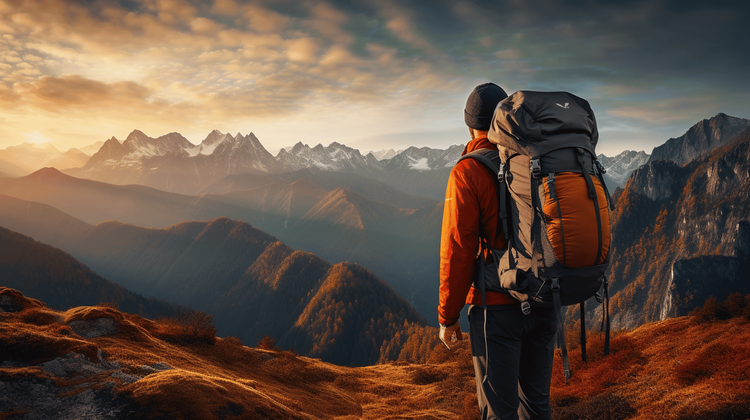A Guide to the Most Spectacular Nature-Related Hobbies

Welcome to the world of nature-related hobbies! If you're someone who enjoys being outdoors, exploring the beauty of nature, and connecting with the natural world, then this guide is for you. In this article, we will take a closer look at some of the most spectacular nature-related hobbies that will not only bring you closer to nature but also provide endless enjoyment and fulfillment.
Nature-related hobbies are not just a way to pass the time; they offer a range of benefits for our mental and physical well-being. Engaging in these hobbies allows us to escape the hustle and bustle of everyday life, reduce stress, and find solace in the peace and beauty of nature. Whether you're a beginner or an experienced enthusiast, there is always something new to discover and learn in the world of nature-related hobbies.
In this guide, we will delve into some popular activities such as birdwatching, photography, hiking and trekking, gardening, stargazing, and nature conservation. Each hobby offers its own unique experiences and opportunities, allowing you to explore different aspects of the natural world and indulge in your passion for nature.
So, whether you're looking to spot rare bird species, capture stunning wildlife photographs, explore breathtaking hiking trails, cultivate a beautiful garden, gaze at the wonders of the night sky, or contribute to the preservation of the environment, there is a nature-related hobby for you. Let's dive in and discover the wonders that await us in the great outdoors!
Birdwatching
Welcome to the wonderful world of birdwatching! If you're a nature lover and enjoy spending time outdoors, birdwatching is a fantastic hobby that allows you to connect with nature and observe the fascinating world of birds. Whether you're a beginner or have some experience, here's everything you need to know about birdwatching.
Getting Started with Birdwatching
Birdwatching is a hobby that can be enjoyed by people of all ages and skill levels. Here are some tips to help you get started:
- Choose the right location: Look for areas with a diverse range of habitats, such as parks, nature reserves, or even your own backyard. These places are likely to have a variety of bird species to observe.
- Invest in a good field guide: A field guide will help you identify different bird species. Look for one with clear illustrations or photographs, along with information about their behavior, habitat, and distinctive features.
- Bring binoculars: Binoculars are an essential tool for birdwatching as they help you get a closer look at birds without disturbing them. Opt for a pair that is lightweight, compact, and provides clear optics.
Essential Birdwatching Equipment
In addition to binoculars, there are a few other pieces of equipment that can enhance your birdwatching experience:
- Notebook and pen: Keeping a birding journal allows you to record your observations, noting the date, time, location, and species you've seen. It's a great way to track your progress and create lasting memories.
- Camera: While not necessary, a camera can help you capture stunning photographs of birds to cherish and share with others. Look for a camera with a good zoom lens for close-up shots.
- Appropriate clothing and footwear: Dress in comfortable, weather-appropriate clothing and wear sturdy shoes for outdoor exploration. Consider wearing muted colors that won't startle the birds.
Identifying Birds and Their Behaviors
One of the most exciting aspects of birdwatching is being able to identify different species and observe their behaviors. Here are a few tips to help you:
- Learn bird calls: Birds often communicate through distinct calls, so being able to recognize their songs can help you identify them even when they're hidden from view.
- Observe behavior: Pay attention to how birds move, feed, and interact with each other. These behaviors can provide clues about their species and offer insights into their unique characteristics.
- Join birdwatching groups or clubs: Connecting with experienced birdwatchers can greatly accelerate your learning journey. They can provide valuable tips, share their knowledge, and even organize group birdwatching outings.
Birdwatching is not just a hobby; it's a rewarding way to connect with nature and engage in conservation efforts. With a little practice and patience, you'll soon find yourself immersed in the wonders of the avian world. So grab your binoculars, head outdoors, and get ready to witness the beauty and diversity of the birds around you. Happy birdwatching!
Check out other sections for more hobbies to explore!
Photography
Are you the kind of person who never misses an opportunity to capture the beauty of nature with your camera? If so, then photography is the perfect hobby for you. It allows you to document and share the wonders of the natural world, creating stunning visual memories that will last a lifetime. Whether you're a beginner or an experienced photographer, there are always new techniques to learn and ways to improve your skills. In this section, we'll explore everything you need to know to get started with nature photography and take your skills to the next level.
Choosing the Right Camera and Lenses
When it comes to nature photography, having the right equipment is essential. While there are many options available, here are some factors to consider when choosing a camera and lenses:
- Camera: Look for a camera that offers manual settings, allowing you to have more control over your images. DSLR and mirrorless cameras are popular options for nature photography due to their ability to interchange lenses and capture high-quality images.
- Lenses: The choice of lenses depends on the type of photography you want to specialize in. For capturing distant wildlife or landscapes, a telephoto lens with a long focal length can be valuable. Wide-angle lenses are great for capturing sweeping vistas and landscapes.
Learning Photography Techniques
To capture breathtaking nature shots, it's important to understand and practice various photography techniques. Here are a few techniques to get you started:
- Composition: Pay attention to the arrangement of elements within your frame. The rule of thirds can help you create visually appealing compositions, where your subject is placed off-center for a more balanced image.
- Lighting: The right lighting can transform an ordinary scene into something extraordinary. Try shooting during the golden hour (the hour after sunrise or before sunset) when the light is soft, warm, and diffused.
- Depth of Field: Experiment with different depths of field to create different effects. A wide aperture (small f-number) will create a shallow depth of field, perfect for isolating your subject from the background.
Capturing Stunning Nature Shots
Now that you have the right equipment and knowledge of photography techniques, it's time to head out into nature and start capturing stunning shots. Here are a few tips to make the most of your photography excursions:
- Research Locations: Explore different natural habitats and research the best locations for photography. National parks, wildlife sanctuaries, and nature reserves offer excellent opportunities to capture diverse flora and fauna.
- Patience and Persistence: Nature photography often requires waiting for the perfect moment to capture that extraordinary shot. Be patient, observe your surroundings, and be ready to seize opportunities as they arise.
- Experiment and Be Creative: Don't be afraid to try new angles, perspectives, and compositions. Experiment with long exposures to create dreamy waterfalls or star trails, or try macro photography to highlight intricate details in flowers and insects.
With these tips and techniques, you'll be well on your way to capturing stunning nature shots that will amaze and inspire others. So grab your camera, venture into the great outdoors, and let your passion for photography guide you on an incredible visual journey.
"Photography is the story I fail to put into words." - Destin Sparks
Hiking and Trekking
Are you someone who loves being in nature, exploring new trails, and challenging yourself physically? If so, hiking and trekking might be the perfect nature-related hobbies for you! Hiking and trekking allow you to immerse yourself in scenic landscapes, breathe in fresh air, and experience the beauty of the great outdoors. From easy day hikes to multi-day treks, there are endless opportunities to discover new trails and enjoy nature's wonders.
Finding the Perfect Hiking Trail
When it comes to hiking and trekking, finding the right trail is essential. Here are a few tips to help you find the perfect hiking trail:
- Research: Start by researching hiking trails in your area or the destination you intend to visit. Look for trail descriptions, difficulty levels, and reviews from other hikers to get an idea of what to expect.
- Difficulty Level: Consider your fitness level and experience when choosing a trail. Beginners may want to start with easier trails and gradually work their way up to more challenging ones.
- Length and Duration: Determine how long you want to hike and the amount of time you can commit. This will help you narrow down your options and choose a trail that suits your schedule.
- Scenery and Features: Think about the type of scenery you enjoy. Do you prefer mountain views, waterfalls, or lush forests? Look for trails that offer the landscapes you find most appealing.
Essential Hiking Gear and Safety Tips
Before hitting the trail, it's important to ensure you have the necessary gear and take proper safety precautions. Here are some essentials:
- Hiking Boots: Invest in a pair of sturdy, comfortable hiking boots that provide ankle support and are appropriate for the terrain you'll be hiking on.
- Backpack: A good backpack is essential to carry your water, snacks, extra layers, and other essentials. Look for one with adjustable straps and multiple compartments for organization.
- Navigation Tools: Carry a map, compass, and/or GPS device to help you navigate the trail. It's also a good idea to study the trail map before setting off.
- Clothing: Dress in layers and wear moisture-wicking, breathable fabrics. Don't forget a hat, sunglasses, and sunscreen to protect yourself from the sun.
- Safety First: Let someone know your hiking plans and estimated return time. Stay on marked trails, follow any posted rules or regulations, and be mindful of your surroundings. Bring a first aid kit and familiarize yourself with basic first aid techniques.
Enjoying Nature's Beauty on the Trail
Once you're out on the trail, take the time to fully appreciate and enjoy the beauty of nature. Here are a few tips for enhancing your hiking experience:
- Slow Down: Take your time to soak in the scenery, listen to the sounds of nature, and observe wildlife. Sometimes the journey is just as important as the destination.
- Stay Present: Disconnect from technology and be fully present in the moment. Use this time to rejuvenate and appreciate the natural world around you.
- Minimize Impact: Practice Leave No Trace principles by packing out your trash, staying on designated trails, and respecting wildlife and vegetation. Leave the trail as you found it for others to enjoy.
- Capture Memories: Consider bringing a camera to capture the stunning landscapes and moments along the way. Photography can be an excellent way to document your adventures and share them with others.
Hiking and trekking are not only a great way to stay active and connect with nature but also provide an opportunity for personal growth, self-reflection, and a break from the hustle and bustle of everyday life. So put on your hiking boots, grab your backpack, and start exploring the amazing trails waiting for you!
Gardening
Gardening is a wonderful nature-related hobby that allows you to connect with the earth, create beautiful spaces, and grow your own plants. Whether you have a spacious backyard or just a small balcony, gardening can be enjoyed by anyone. Not only is it a therapeutic and stress-relieving activity, but it also provides numerous benefits such as fresh produce, beautiful flowers, and a healthier environment. In this section, we will explore the joys of gardening and provide some tips to get you started.
Planning and Designing Your Garden
Before you get your hands dirty, it's important to plan and design your garden. Here are a few steps to help you get started:
- Assess your space: Determine how much space you have available for your garden, whether it's a small patch in your yard or a balcony. Consider the amount of sunlight and shade your space receives throughout the day.
- Choose your garden style: Decide on the style and theme of your garden. Would you like a vibrant flower garden, a kitchen garden filled with herbs and vegetables, or a low-maintenance succulent garden? The choice is yours!
- Consider your climate: Take into account the climate in your area. Choose plants that are suited to your climate and will thrive in your garden.
- Draw a garden layout: Sketch out a plan for your garden, taking into consideration the placement of plants, walkways, and any other features you want to include.
Choosing the Right Plants
Now that you have a plan in place, it's time to choose the plants for your garden. Here are a few things to keep in mind:
- Consider your gardening experience: If you're a beginner, start with easy-to-grow plants such as succulents, herbs, or hardy flowers. As you gain experience, you can venture into more challenging plants.
- Know your soil: Understand the type of soil in your garden and choose plants that are suited to it. Some plants prefer well-drained soil, while others thrive in clay or sandy soil.
- Select a variety of plants: Choose a mix of annuals and perennials to add interest and color to your garden throughout the year. Consider plants with different textures and heights to create a visually appealing garden.
- Consider maintenance: Think about the amount of time and effort you can dedicate to garden maintenance. If you have a busy schedule, opt for low-maintenance plants that require minimal care.
Caring for Your Garden
Once your garden is planted, it's important to provide the necessary care to help your plants thrive. Here are some tips to keep in mind:
- Watering: Water your plants regularly, taking into account their specific water requirements. Some plants prefer moist soil, while others prefer drier conditions. Be mindful not to overwater or underwater your plants.
- Fertilizing: Feed your plants with a balanced fertilizer to provide them with the necessary nutrients. Follow the guidelines on the fertilizer packaging for the appropriate dosage.
- Weeding: Regularly remove weeds from your garden to prevent them from competing with your plants for nutrients and space.
- Pruning: Prune your plants to promote healthy growth and maintain their shape. Remove dead or damaged branches and cut back overgrown areas.
By following these tips, you can create a stunning garden that brings you joy and satisfaction. Remember, gardening is a continuous learning process, so don't be discouraged by setbacks or failures. Embrace the journey and enjoy the beauty and tranquility that gardening brings to your life. Happy gardening!
Next section:Stargazing
Stargazing
Have you ever looked up at the night sky and marveled at its beauty? Stargazing is a captivating hobby that allows you to explore the wonders of the universe and connect with nature on a whole new level. Whether you're a beginner or an experienced stargazer, there's always something new and exciting to discover. In this section, we'll explore the world of stargazing and provide you with tips and resources to enhance your experience.
Understanding the Night Sky
Before you venture into the world of stargazing, it's important to have a basic understanding of the night sky. Here are a few key concepts to help you get started:
- Stars and Constellations: Stars are massive balls of gas that emit light and heat. Constellations, on the other hand, are groups of stars that form recognizable patterns in the sky. Getting familiar with the most common constellations can make stargazing more enjoyable.
- Planets: Planets are celestial bodies that orbit around the sun. They are often visible in the night sky and can be identified by their distinct brightness and steady light. Some of the most commonly visible planets include Mars, Jupiter, and Saturn.
- Moon Phases: The moon goes through different phases throughout the month, from the new moon to the full moon and everything in between. Understanding the moon phases can help you plan your stargazing sessions, as the amount of moonlight can affect the visibility of stars and other celestial objects.
Telescopes and Binoculars for Stargazing
While stargazing can be enjoyed with the naked eye, using telescopes and binoculars can greatly enhance your experience. Here are some tips for choosing the right equipment:
- Telescopes: A telescope allows you to see celestial objects with greater detail. When choosing a telescope, consider factors such as its size, type, and magnification power. Beginners may find that a portable and easy-to-use telescope suits their needs best.
- Binoculars: Binoculars are a more portable and affordable alternative to telescopes. They can provide a wider field of view, making it easier to scan the night sky and identify constellations. Look for binoculars with a high magnification power and a wide objective lens for the best stargazing experience.
Identifying Constellations and Stars
One of the most rewarding aspects of stargazing is being able to identify constellations and stars. Here are a few techniques to help you in your journey of exploration:
- Star Maps and Mobile Apps: Star maps and mobile apps can be invaluable tools for identifying constellations and stars. They provide interactive maps of the night sky, allowing you to easily locate and learn about different celestial objects. Some popular apps include SkyView, Night Sky, and Star Walk.
- Stellarium: Stellarium is a free open-source planetarium software that can be installed on your computer. It provides a highly realistic and interactive view of the night sky, making it an excellent tool for stargazing enthusiasts.
- Online Resources and Communities: The internet is a vast resource filled with information on stargazing. Websites, forums, and social media groups dedicated to stargazing can provide valuable insights, tips, and guidance. Engaging with these communities can enhance your knowledge and passion for stargazing.
Stargazing is a truly mesmerizing hobby that allows you to escape from the hustle and bustle of everyday life and immerse yourself in the beauty of the universe. Whether you're gazing at the stars from your backyard or venturing out to remote areas with dark skies, remember to take the time to observe, appreciate, and wonder at the vastness of the cosmos. Happy stargazing!
"The cosmos is within us. We are made of star-stuff. We are a way for the universe to know itself." - Carl Sagan
Nature Conservation
Nature conservation is a crucial aspect of preserving our planet's biodiversity and ensuring a sustainable future. By actively participating in conservation efforts, we can make a positive impact on the environment and contribute to the well-being of both wildlife and ecosystems. Here are some ways you can get involved in nature conservation:
Getting Involved in Conservation Efforts
- Join Local Conservation Organizations: One of the best ways to get involved in nature conservation is to join local conservation organizations in your area. These organizations often have volunteer programs and initiatives that allow you to contribute directly to conservation efforts.
- Participate in Nature Surveys and Monitoring: Many conservation organizations conduct surveys and monitoring programs to gather data about wildlife populations and habitats. By participating in these activities, you can help gather valuable information that can inform conservation strategies.
- Support Wildlife Rehabilitation Centers: Wildlife rehabilitation centers play a vital role in rescuing and rehabilitating injured or orphaned animals. By supporting these centers through donations or volunteering, you can contribute to the rehabilitation and release of wildlife back into their natural habitats.
Volunteering for Environmental Projects
- Organize Beach Cleanups: Beach cleanups are a great way to contribute to environmental conservation. Gather a group of friends or join community-based cleanup events to remove litter and debris from beaches, which can pose serious threats to marine life.
- Participate in Tree Planting Initiatives: Trees play a crucial role in maintaining the balance of ecosystems and combating climate change. Join tree planting initiatives organized by local authorities or conservation organizations to help restore and expand forest habitats.
- Assist in Habitat Restoration: Many natural habitats have been degraded or destroyed due to human activities. Join habitat restoration projects to help restore and create habitats for wildlife, such as wetlands, forests, and meadows.
Promoting Sustainable Practices
- Reduce Plastic Usage: Reducing plastic usage is an effective way to promote sustainability. Avoid single-use plastic items such as straws and plastic bags, opt for reusable alternatives, and participate in plastic recycling programs.
- Practice Responsible Tourism: When traveling, choose eco-friendly accommodations, support local businesses that prioritize sustainability, and adhere to guidelines for responsible outdoor activities to minimize your impact on fragile ecosystems.
- Educate Others: Promote awareness about the importance of nature conservation by educating others. Share your knowledge about environmental issues, wildlife conservation, and sustainable practices through social media, community events, or educational workshops.
By actively participating in nature conservation efforts, you can contribute to the protection and preservation of our planet's natural treasures. Remember, even small actions can make a big difference. Together, we can create a sustainable future for generations to come.
Conclusion
In conclusion, engaging in nature-related hobbies can be a fulfilling and enriching experience. Whether it's birdwatching, photography, hiking and trekking, gardening, stargazing, or nature conservation, these activities allow us to connect with the natural world and appreciate its beauty.
By exploring the diverse array of bird species, capturing stunning nature shots, immersing ourselves in the tranquility of hiking trails, creating vibrant gardens, marveling at the wonders of the night sky, and taking part in conservation efforts, we not only enjoy ourselves but also contribute to the well-being of our planet.
These hobbies offer us a chance to unwind from our daily routines, be present in the moment, and nurture our soul. They remind us about the importance of preserving nature and inspire us to become better stewards of the environment.
So, why not embark on a new nature-related hobby today? Start small, be curious, and embrace the wonders that our natural world has to offer. Whether you're a beginner or an experienced enthusiast, these activities have something for everyone. Immerse yourself in the beauty of nature and let it bring you joy and a sense of connection to the world around you.
In the words of John Muir, "In every walk with nature one receives far more than he seeks." So, go out there and explore, observe, capture, hike, garden, gaze, and conserve. The possibilities are endless, and the rewards are immeasurable. Happy hobbying!
Frequently Asked Questions
- What are some popular nature-related hobbies?Some popular nature-related hobbies include bird watching, hiking, gardening, wildlife photography, and nature journaling.
- How can I get started with bird watching?To get started with bird watching, you can invest in a pair of binoculars, a field guide to identify the birds, and join local bird watching groups or associations. Start observing birds in your backyard or visit nearby parks and nature reserves.
- What equipment do I need for wildlife photography?For wildlife photography, you will need a digital camera with a telephoto lens, a tripod for stability, spare batteries and memory cards, and suitable protective gear to withstand various weather conditions.
- How do I create a wildlife-friendly garden?To create a wildlife-friendly garden, plant native plants, provide food sources such as bird feeders and nectar-rich flowers, include water sources like birdbaths or ponds, provide shelter with trees, shrubs, and nesting boxes, and avoid using pesticides and herbicides.
- What is nature journaling and how can I start?Nature journaling involves observing and recording observations of the natural world in a journal. To start nature journaling, choose a journal or notebook, take it with you on outdoor adventures, observe and sketch plants, animals, and landscapes, and write down your thoughts and observations.




